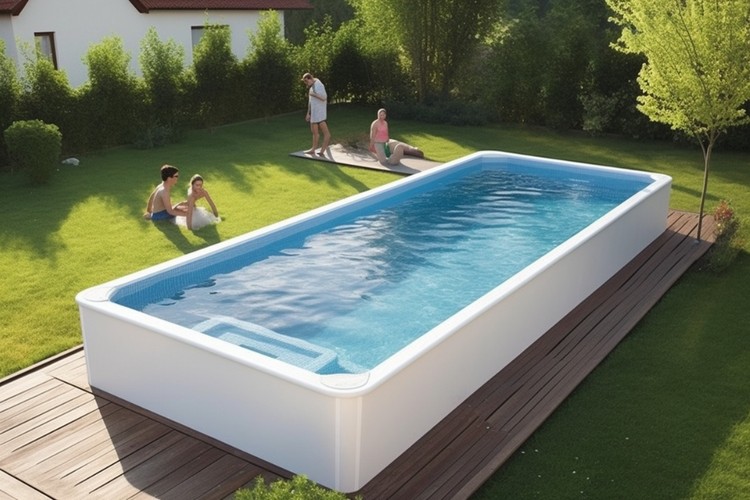Complete Guide to Backyard Pool Installation Planning
Installing a backyard pool transforms your outdoor space into a personal oasis for relaxation, exercise, and entertainment. Whether you're dreaming of refreshing summer swims or year-round aquatic enjoyment, proper planning ensures your pool project meets your needs, budget, and local regulations. Understanding the essential steps, material options, and design choices helps homeowners make informed decisions that enhance their property value and lifestyle for years to come.

What Are the Essential Steps Involved in Planning and Executing a Backyard Pool Installation?
Successful pool installation begins with thorough planning and preparation. The first step involves obtaining necessary permits from your local building department, which typically requires detailed construction plans and site surveys. Professional contractors will assess your property’s soil conditions, drainage patterns, and utility locations to determine the optimal pool placement.
Design consultation follows, where you’ll work with pool specialists to create detailed blueprints that incorporate your vision, budget, and site constraints. Excavation marks the beginning of actual construction, requiring careful coordination with utility companies to avoid underground lines. The installation process then progresses through plumbing and electrical work, structural construction, and finishing touches like decking and landscaping.
Timeline management proves crucial, as weather conditions, permit approvals, and material availability can affect project duration. Most residential pool installations take 6-12 weeks from excavation to completion, depending on complexity and local regulations.
How Do You Choose Between In-Ground and Above-Ground Pool Options?
Choosing between in-ground and above-ground pool options depends on several key factors including budget, property characteristics, and long-term goals. In-ground pools offer superior aesthetic appeal, increased property value, and greater customization possibilities. They integrate seamlessly with landscaping and provide more durable, permanent solutions that can accommodate various shapes, depths, and luxury features.
Above-ground pools present more affordable entry points into pool ownership, with faster installation timelines and lower maintenance requirements. These options work well for temporary housing situations, rental properties, or households with limited budgets. Modern above-ground designs have evolved significantly, offering attractive appearances and quality construction that can last decades with proper care.
Consider your property’s slope, soil conditions, and available space when making this decision. In-ground installations require adequate access for excavation equipment, while above-ground options need level surfaces and proper drainage around the pool perimeter.
What Are the Common Materials Used in Residential Pool Construction?
Pool construction utilizes various materials, each offering distinct advantages for different applications and budgets. Concrete represents the most versatile option, allowing custom shapes and sizes while providing exceptional durability. Gunite and shotcrete concrete applications create seamless, waterproof shells that can withstand ground movement and weather extremes.
Fiberglass pools arrive as pre-manufactured shells, offering smooth surfaces that resist algae growth and require fewer chemicals for maintenance. These options provide faster installation times and consistent quality control, though they limit customization opportunities compared to concrete alternatives.
Vinyl liner pools combine steel, aluminum, or polymer walls with flexible vinyl membranes that create watertight barriers. This approach offers cost-effective solutions with attractive pattern options, though liners require periodic replacement every 7-10 years.
Pool decking materials include concrete, natural stone, pavers, and composite materials. Each option provides different aesthetics, slip resistance, and heat absorption characteristics that affect both safety and comfort around your pool area.
What Unique Pool Design Trends Are Popular Worldwide?
Contemporary pool design embraces sustainability and technology integration, with solar heating systems and energy-efficient equipment becoming standard features. Saltwater chlorination systems gain popularity for their gentler chemical approach and reduced maintenance requirements.
Natural swimming pools incorporate biological filtration systems that create eco-friendly environments resembling natural bodies of water. These designs blend seamlessly with landscaping while providing chemical-free swimming experiences that appeal to environmentally conscious homeowners.
Infinity edge pools create stunning visual effects, particularly in properties with scenic views or elevated locations. Smart pool technology allows remote monitoring and control of temperature, lighting, and chemical levels through smartphone applications, enhancing convenience and efficiency.
What Are Typical Pool Installation Costs and Provider Options?
Pool installation costs vary significantly based on type, size, materials, and regional factors. Understanding pricing structures helps homeowners budget appropriately and select qualified contractors who provide transparent estimates and quality workmanship.
| Pool Type | Size Range | Cost Estimation | Key Features |
|---|---|---|---|
| Above-Ground | 12-30 feet | $3,000-$15,000 | Quick installation, removable, lower maintenance |
| Vinyl Liner In-Ground | 16x32 feet | $25,000-$45,000 | Custom shapes, smooth surface, liner replacement needed |
| Fiberglass In-Ground | 12x24 feet | $35,000-$65,000 | Low maintenance, quick install, limited shapes |
| Concrete In-Ground | Custom sizes | $50,000-$100,000+ | Unlimited design, durable, highest customization |
Prices, rates, or cost estimates mentioned in this article are based on the latest available information but may change over time. Independent research is advised before making financial decisions.
How Do You Maintain Pool Water Quality and Safety?
Proper water chemistry maintains safe, comfortable swimming conditions while protecting pool equipment and surfaces. Regular testing ensures balanced pH levels, chlorine content, and alkalinity within recommended ranges. Automated chemical feeders and monitoring systems simplify maintenance routines while providing consistent water quality.
Safety features including pool covers, fencing, and alarm systems protect family members and comply with local safety regulations. Self-closing gates, pool covers, and emergency equipment should be installed according to manufacturer specifications and local building codes.
Regular professional maintenance includes equipment inspections, filter cleaning, and seasonal opening and closing procedures. Establishing relationships with local pool service providers ensures prompt attention to equipment issues and water quality problems that require professional expertise.
Installing a backyard pool requires careful planning, appropriate material selection, and professional installation to achieve optimal results. Whether choosing in-ground or above-ground options, understanding the steps involved in planning and executing installations helps ensure successful projects that provide years of enjoyment while enhancing property values and family lifestyle.




